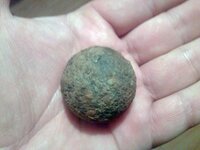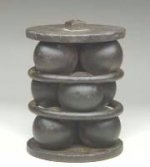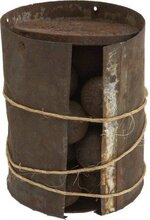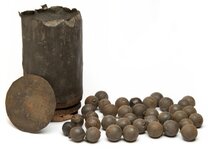GuitarGuy
Jr. Member
Could this be a cast iron grape shot ?
I don't have a scale to weigh it, but looks the part and was found at a mid to late 1800's house in Ky with a Etrac at about 4 inches.
It rings up at: 28:36 air testing.
Edit: It weighs 6.1 ounces and is 1 1/4 diameter
I don't have a scale to weigh it, but looks the part and was found at a mid to late 1800's house in Ky with a Etrac at about 4 inches.
It rings up at: 28:36 air testing.
Edit: It weighs 6.1 ounces and is 1 1/4 diameter
Attachments
Last edited:










